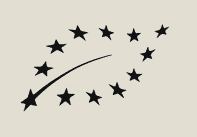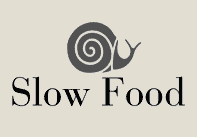Reports
The egg, homage to the symbol of life

Philosophers may squirm in phrases, but the vernacular will never be surprised at an intellectual egg dance. He formulates his opinion without faxes even when it comes to the symbol of life: “Whether man, whether animal, it remains the same, their origin is a small egg.” Thus, the age-old question of which came first, the hen or the egg, would be solved.
Chickens themselves know no ideology. Most white eggs come from white hens, most brown from brown, but there are also brown laying white breeds and vice versa. Sometimes they lay the egg with the blunt pole in front, then with the pointed one – as it pleases them.
In any case, Easter without an egg is unthinkable. It is considered a symbol of life and is so perfect in its form that every designer dreams of having created it before the great stylist called nature. To be sure, nutritional science has cast a shadow over egg dishes by pointing to cholesterol. Too much egg is unhealthy. But please, what is too much? Bismarck elegantly cracked eggs with a horned spoon well into old age. Madame Pompadour and Napoleon loved eggs, as did the poet Jean Paul, the painter Menzel and the composer Handel. If you know your body, you’ll know what’s good for it, and a little Easter egg orgy never hurt anyone.
In the Finnish national epic “Kalevala”, the god of the air in the form of a duck lays seven world eggs of gold and iron on the knee of a sleeping sea goddess protruding from the primordial ocean, but due to a careless movement of the water mother, the eggs break – and from this the universe was born. It was as simple as that. The ancient Germanic peoples saw in the egg the divine and the secret of fertility. So they ate eggs diligently before they went into battle or went to the mistress. Later, the eggs became the talk of the town; it was thought that the devil was in them, as well as the curse of carnality, and there were monks who preached that witches used the eggs as a means of magic, writing the name of the victim in the tip of the inside of an egg.
Unfortunately, the egg as a culinary solo is rarely given due attention. Omelettes usually turn out too dry, fried eggs too hard-edged. The latter is perfect when both the white and the yellow have the same consistency and the yolk is covered with a slightly iridescent skin, the famous mirror. This requires a fireproof dish of small diameter – so that the egg white does not expand too much – in which a little butter is melted over low heat. Crack in the eggs and place the pan in the oven, where, with the top heat slightly higher than the bottom heat, the fried eggs will turn out well in three to four minutes.
As with fried eggs, many believe that scrambled eggs have nothing to do with cooking. What a mistake! The first commandment is: small heat! The second is: butter, butter, butter! Crack the eggs into a heavy pan, salt, pepper, whisk, and whisk over low heat (preferably: in a bain-marie) until the porridge shows the first signs of firming; a few splashes of sparkling water, by the way, will encourage airiness. Now stir in butter cut into small pieces, again and again, until the dish is thick but not yet actually set and shines golden. A scrambled egg must have no skin, it must look like a feathery, foamy little cloud.
Incidentally, you can tell if an egg is fresh by the way it stays on the bottom when placed in a bowl full of water. Older eggs will straighten or float. The reason is simple: moisture evaporates through the shell and an ever-increasing air chamber is formed. In addition to water, fat, minerals, lecithin and vitamins, a medium-sized egg contains about seven grams of high-quality proteins, especially in the yolk – and all this regardless of the color of the shell.
After all, “eggs are a pillar of the kitchen,” as the Habs & Rosner appetite encyclopedia from 1894 puts it. Grimod de la Reyniere, the first gastronomic critic, saw it similarly, saying 200 years ago that if you took away the eggs from the cooks, their art would collapse miserably. That’s right: eggs give pastries their golden color, sauces their hold and casseroles their proud height. To see what cooks have come up with for eggs, you have to look in Hering’s “Lexikon der Küche” (Encyclopedia of Cookery): around 600 egg variations are meticulously listed there, such as Eiernockerl à la Rottenhöfer.
A look at the literature shows how times are also changing when it comes to eggs. Today, gourmets roughly distinguish eggs from industrially structured factory farming from those laid by so-called “happy hens” under the patronage of a rooster in a small-scale farmyard, freely roaming and scratching. The latter are more aromatic, fragrant.
Guy de Maupassant took a far more differentiated approach to the question of quality around 1900: “How rare it is nowadays to find really good eggs, with reddish yolks and the right aroma. I am particularly meticulous when it comes to feeding my chickens. What the animal has eaten, the quintessence of its entire diet – you have to be able to taste all that. How much better people would eat if they paid more attention to this point.”
Rather, at the beginning of the 21st century, people seem to look at the ceremonial, namely how someone opens the breakfast egg. If he knocks it up with a small spoon, he is considered sensitive, even timid, according to the little basics of inner life; if he decapitates it razor-sharp, he is considered either a brutal brute or a dynamic type. Accordingly, Hölderlin will probably have cracked the egg, Napoleon, on the other hand, will have decapitated it.
However, a feast for the eyes is a fluffy egg soufflé, served in the hollowed egg shell. A “Rouen omelet” filled with poultry liver puree is a sensual pleasure, while “Nice-style” fried eggs on melted tomatoes mixed with tarragon and anchovy strips are a delight. Delicate is a fried egg on spinach with white truffles (alternatively perfumed with truffle oil). Black truffles perfect scrambled eggs. Sophistication has waxy cooked seven-minute eggs, halved, served on mashed potatoes with cress and flanked by a smooth mustard sauce – or real Styrian farmer’s pumpkin seed oil.
This egg à la Therese is not as precious as the jeweled egg called “Love Trophy” by the famous jeweler Fabergé, which Tsar Nicholas gave to his wife on Easter 1905, but it is a thousand times more delicious. The main thing with an egg is that the deep yellow yolk reflects something like the memory of the sun over the farm.
(FINK Magazine, Text: August F. Winkler)
 ist zertifizierter
ist zertifizierter  BIO-Händler und stolzes
BIO-Händler und stolzes  Slow Food-Mitglied — Tante Emma wäre stolz auf uns!
Slow Food-Mitglied — Tante Emma wäre stolz auf uns!
